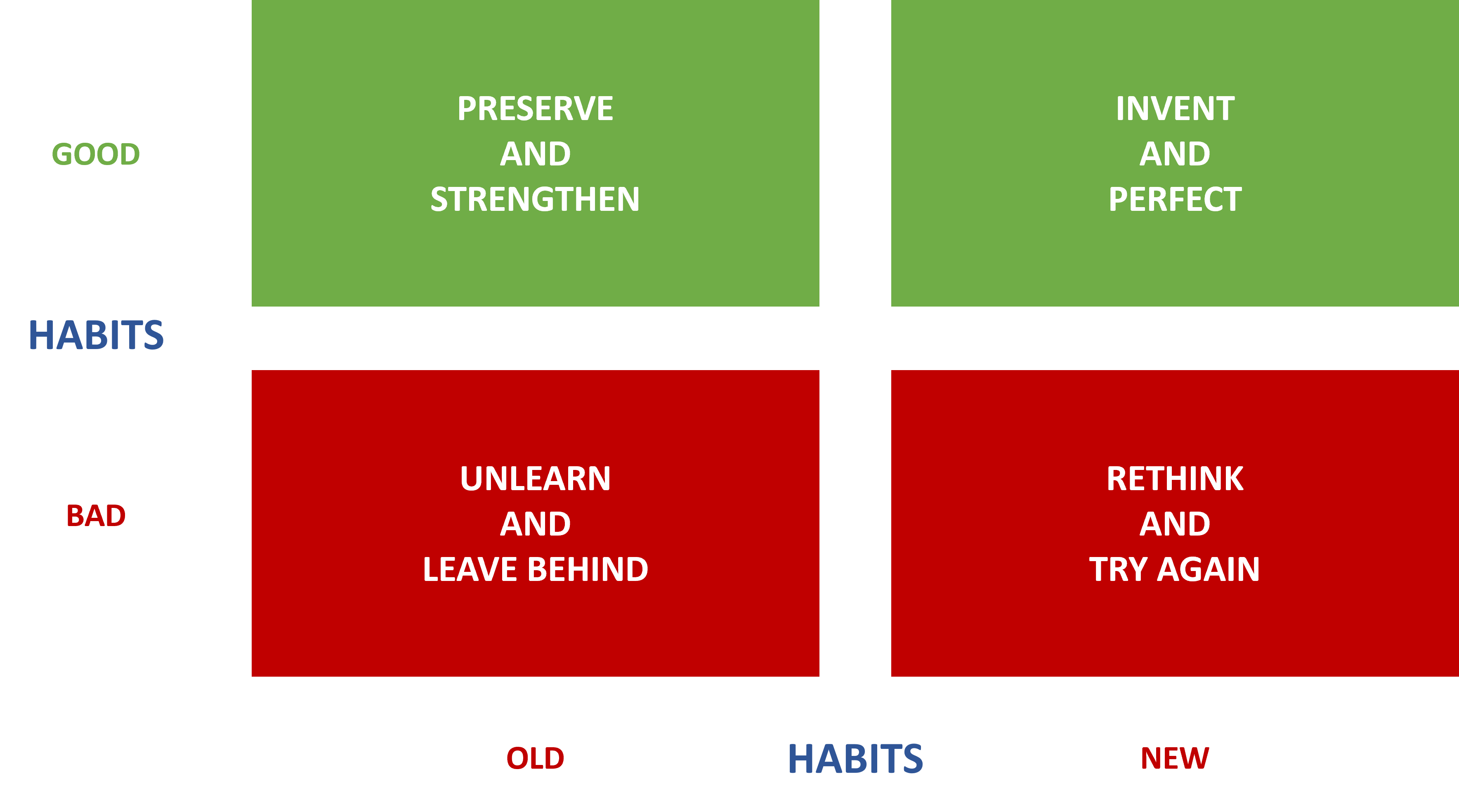How to Implement Keystone Habit Changes
August 21, 2023
Victoria Rose & Nellie Stansbury
What are keystone habits?
Drawing on neuroscience, Graybiel (2008) provides a technical definition of habits as the: sequential, repetitive, motor, or cognitive behaviors elicited by external or internal triggers that, once released, can go to completion without constant conscious oversight (p. 361).
In common terms, habits are actions or thoughts people have without much forethought. Functionally, they capture the organization’s specific knowledge that has been created over time and then translate that knowledge into action in a way that conserves energy and resources.
Why do they matter?
Decades of research has shown that habits are:
- Predominantly acquired through experience and interaction with the environment
- Repetitious and can become resistant to change, such as in addiction
- Performed with little conscious thought or effort
- Can be elicited by environmental or internal cues
- The expression of habits can be behavioral or cognitive, such as in habits of thought (Graybiel, 2008).
How to Implement Keystone Change
Analyzing an organization’s culture as a bundle of habits serves to focus the discussion on key areas of consensus that reveal a targeted and practical agenda for change. When driving successful changes, leaders choose the “keystone habits” that can have the biggest impact on the organization. Below are three steps organizations can take to create meaningful change within their organization.
- Identify keystone habits: focus on impact and interconnectedness
- Keep interventions small and repetitious
- Use storytelling and celebration to “ritualize” the performance of keystone habits
Identify Keystone Habits: Focus on Impact and Interconnectedness
Like most change efforts, the process begins with diagnosis. Acting intentionally to modify or build keystone habits calls for a reliable diagnostic process that pays attention to the right factors. Practitioners need to develop the skills (and methodologies) to identify and distinguish keystone habits from ordinary habits. Keystone habits are linked to the organization’s effectiveness (impact), and keystone habits are tightly interwoven with other habits, routines, and processes in the organization (interconnectedness). This means that intervening in keystone habits is likely to have a cascading effect, so that change started in one place leads to many other changes in many other places. For example, the act of eating together strengthens the social bonds within the family but also aligns a number of the habits and routines leading up to and following mealtime.

The Habit Change Exercise (fig. 1 above) provides insight for leaders looking to identify habits to drive successful changes.
Keep Interventions Small and Repetitious
When it comes to intervening on keystone habits, the “scalability” of impact is hardly determined by the size or scope of the intervention. Habits are repetitious. Some are repeated on a daily or weekly basis and others moment to moment. This is a powerful reminder that the best interventions will stay focused and tap into the right habits rather than attempting to “boil the ocean.” As one example of a small habit with large implications, Mallidou, Cummings, Schalm, and Estabrooks (2012) found that minor interruptions in nurses’ interactions with patients, such as when called to assist another patient or staff member, have a significant deleterious effect on patient care and health outcomes. A simple but powerful intervention in this context could redefine the keystone habit as “staying with your patient to the completion of each interaction.” Of course, this might also require unlearning some bad old habits, such as responding to all requests, even minor and nonessential ones.
Use Storytelling and Celebration to “Ritualize” the Performance of Keystone Habits
New habits are unlikely to take hold in organizations without diligent efforts for socializing and embedding them. Finding ways to reinforce keystone habits and make their performance rituals within the organization is an important part of the solution. This leads to desired behaviors taking on greater symbolic and psychological meaning over time. The meaning of rituals is often created and reinforced through storytelling and celebrations. These are opportunities for the organization, often its leaders, to clarify the value of the new, good habits and the need to extinguish the bad, old ones.
Considering organizational cultures as a collection of habits and routines highlights how keystone habits wield significant influence, especially for change management experts aiming to integrate initiatives. While diagnosing and intervening in culture might appear challenging, beginning with a seemingly minor habit could be the most impactful and optimal approach. This strategy ensures that the change goes well beyond surface-level impact, setting the stage for substantial and lasting transformation.
To read more on the research in this article check out: “Habits as Change Levers” by Dr. Dan Denison and Levi Nieminen.
To learn more about Denison and our work with organizational culture, visit www.denisonconsulting.com.




